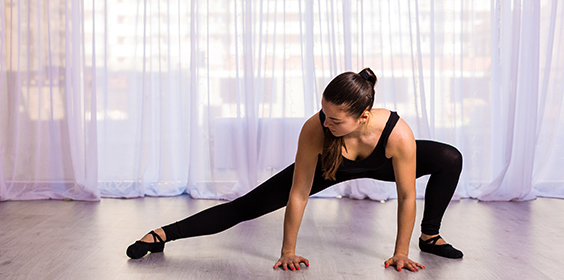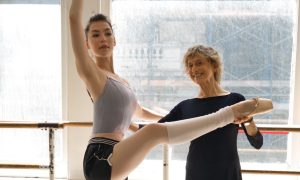Your studio is a great place to learn from your teachers and to work with other dancers, but what do you do when you just can’t get enough dance? Practicing at home is the next best option! In addition to feeding your need to move, rehearsing at home can also give you a leg up on furthering your technique and the ability to review routines.
If you’re seriously interested in dancing in your own space, then it’s time to consider in-home studio options. As the leading dance flooring company, Stagestep gets many questions about in-home dance studio options. They take requests seriously too, as their experts emphasize that without the proper dance flooring at home, you are inviting injury.
“A safe environment maximizes your performance potential and keeps you healthy,” explains Stagestep President Randy Swartz.
For those considering installing an in-home studio, Swartz stresses the three elements to a safe floor:
#1. “A floating wood subfloor or a duel density foam-backed flooring system is essential,” begins Swartz. “You jump (small or large) hundreds of times during class. Each time you hit the floor, gravity times three hits your body and over time causes fatigue and injury. Having a shock-absorbing subfloor helps reduce that harmful impact. Less pain more dance.”
#2. “It is important to have a flooring system that supports you when you balance. You can’t dance on a trampoline because it does not have any lateral (sideways) foot support. Carpet is not an ideal surface for the same reason. You need a floor that supports your foot. You will surely tumble trying an arabesque on a pillow. Staying upright should not be an iffy option,” Swartz continues.
#3. “It is called ‘coefficient of friction’. You may call it ‘slippery’ or ‘sticky’. We like to call it ‘fast’ or ‘slow’. Ballet dancers like slower floors. Jazz and tappers like faster floors. The wrong floor surface can make you feel like you are dancing on an ice skating rink or stuck in mud. Both are uncomfortable and dangerous,” Swartz concludes.
Overall, Swartz points out that there are a number of components to consider before choosing the proper floor. As there are many options, it’s essential that buyers ask questions and make sure they’re picking the type that will keep them safe.
Here are all the questions to ask yourself when making your choice:
#1. Where will this floor go? How big a space do I have at my disposal?
#2. Is the space going to be used for other purposes?
#3. What do I really need? Just a small personal practice board and/or mat? Or a full professional dance studio floor in my home? Do I want portable mirrors and barres?
#4. Is my choice safe?
#5. What will this cost?
#6. Is it easy to install and perhaps, more importantly, can it easily be removed?
To learn more about what floor works for you, head to www.stagestep.com.













